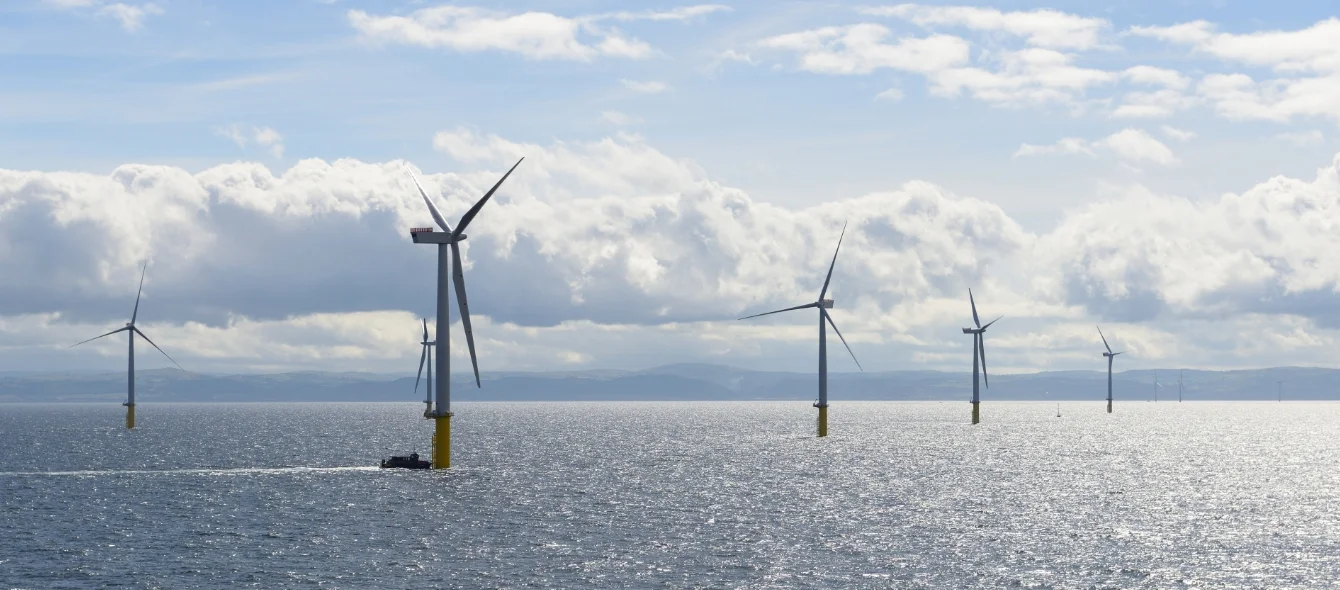Renewables’ share of electricity generation was 36.9%, up from 33.0% in 2018, according to provisional data released by the Department for Business, Energy and Industrial Strategy (BEIS) in March.
Taking the addition of biogas into the gas grid and variations in weather conditions into account, renewables met a record 34.6% of the UK’s gross electricity consumption. Wind power last year became the UK’s second largest source of electricity, generating 64.1 TWh.
Offshore takes the lead
Records were set for onshore wind, offshore wind and bioenergy, owing to new capacity coming online.
In the third quarter of 2019, offshore wind generation overtook onshore wind in terms of generation for the first time and — averaged over the year — each contributed 9.9% of total electricity supply. Bioenergy accounted for 11.3% and solar 1.4%.
Data for fourth-quarter 2019 shows offshore wind providing 31.4% of all renewable electricity generation. This made up for low levels of solar and hydro power generation as a result of a very dry November and a 25.8% drop in average sunlight hours over the quarter.
Share of total UK electricity generation 2010-2019
Reliable power source
The big contribution made by offshore wind reflects its reliability – wind speeds offshore are higher and more consistent than onshore.
The difference is clear when capacity is compared with generation. Offshore wind represents 20.7% of total installed renewable energy capacity in the UK, but accounted for almost a third of electricity generation in the fourth quarter.
Load factors – the proportion of maximum generation achieved – vary over the year, depending on the season, but over the period 2016-2019 offshore wind almost always had a higher load factor than hydropower.
In fourth-quarter 2019, offshore wind’s load factor was almost 50%, in comparison with hydro at 42% and onshore wind at just under 30%. Bioenergy had a load factor of 58.8%.
From 2010 to 2019, offshore load factors averaged 38%, compared with 26% for onshore wind.
New capacity
The UK added 3 GW of new renewable energy capacity in 2019, the lowest increase since 2010, for a total of 47.4 GW. However, 1.6 GW of the new capacity was offshore wind, owing to capacity extensions at the Hornsea 1 and Beatrice wind farms and the start-up of the East Anglia 1 project. Bioenergy generation gained from the Lynemouth biomass plant coming online in late 2018.
The UK offshore wind sector is less than 20 years old, yet, over the last decade, capacity has risen more than seven-fold from 1.3 GW in 2010 to 9.8 GW at the end of 2019.
To put the country on the path to net zero carbon emissions by 2050, the government is targeting as much as 40 GW of offshore wind by 2030, underpinned by a 65% drop in costs between the allocation rounds held in 2015 (£114-119/MWh) and 2019 (£40-£42/MWh), the BEIS data shows.
UK onshore and offshore wind load factors 2010-2019
Photo credit: RWE AG
